Financial Aspects of Sustainable Research Software: UG DCC project results
Text author: Burcu Beygu
The UG DCC led an NWO-awarded project that investigates the financial aspects of sustaining research software in the Natural and Engineering Science (NES) domain, using a national survey to identify structural funding bottlenecks. By highlighting the under-recognized maintenance efforts and fragmented funding landscape, the study offers key findings and recommendations to better support the long-term viability of research software essential to scientific progress.
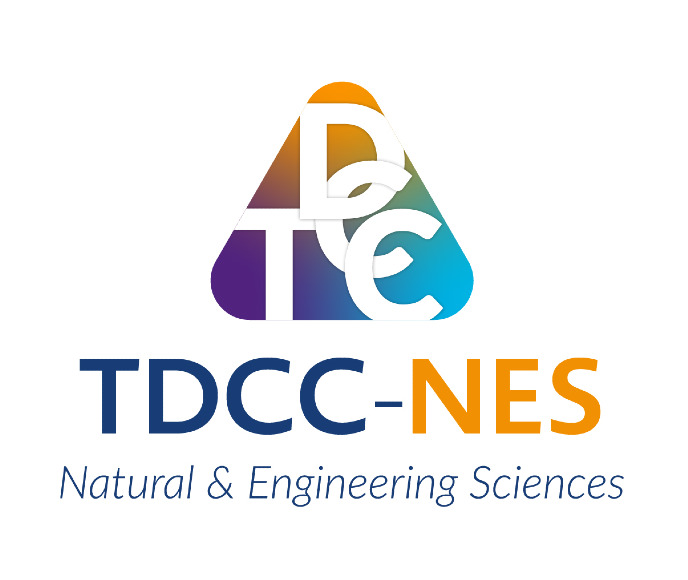
Developing research software is a fundamental aspect of research in the NES domain. Such software ranges from tools developed during PhD projects, to infrastructure services that support novel data processing pipelines, to software used in experimental setups for instrument control and data collection. They play a critical role in advancing scientific discovery and can have a long-term impact well beyond the lifespan of the original project.
Despite their importance, research software frequently faces sustainability challenges, especially once project funding ends. Sustaining research software requires continuous human effort and dedicated financial resources.
Bottlenecks in research software funding
In 2022, NWO awarded the CIT’s UG Digital Competence Centre (UG DCC) the project Financial Aspects of Sustainable Research Software. Dr. Burcu Beygu, Research Data and Software Management expert of the UG DCC, led the project from January 2024 to April 2025 as a joint effort with TU Delft and the Centrum Wiskunde & Informatica (CWI), with support from the Thematic Digital Competence Center (TDCC) NES.
The goal was to investigate the financial aspects of sustaining research software in the NES domain. Through a national survey involving researchers and academic professionals, the aim was to uncover structural bottlenecks in how funding for research software is distributed and maintained. These issues are explicitly acknowledged in the TDCC NES roadmap, where long-term software maintenance was classified as an “unknown cost” and identified as a major “bottleneck” challenge.
Pioneering research software investigation
This is the first project awarded and completed as part of the TDCC-NES bottleneck initiative, which has placed the UG DCC as a pioneering platform for research software in the Netherlands.
It is also the first systematic investigation and mapping of the Dutch NES community engaged in research software development. In terms of methodology, it is the first effort to collect data directly from researchers and research professionals on the topics of research software development, financing and recognition.
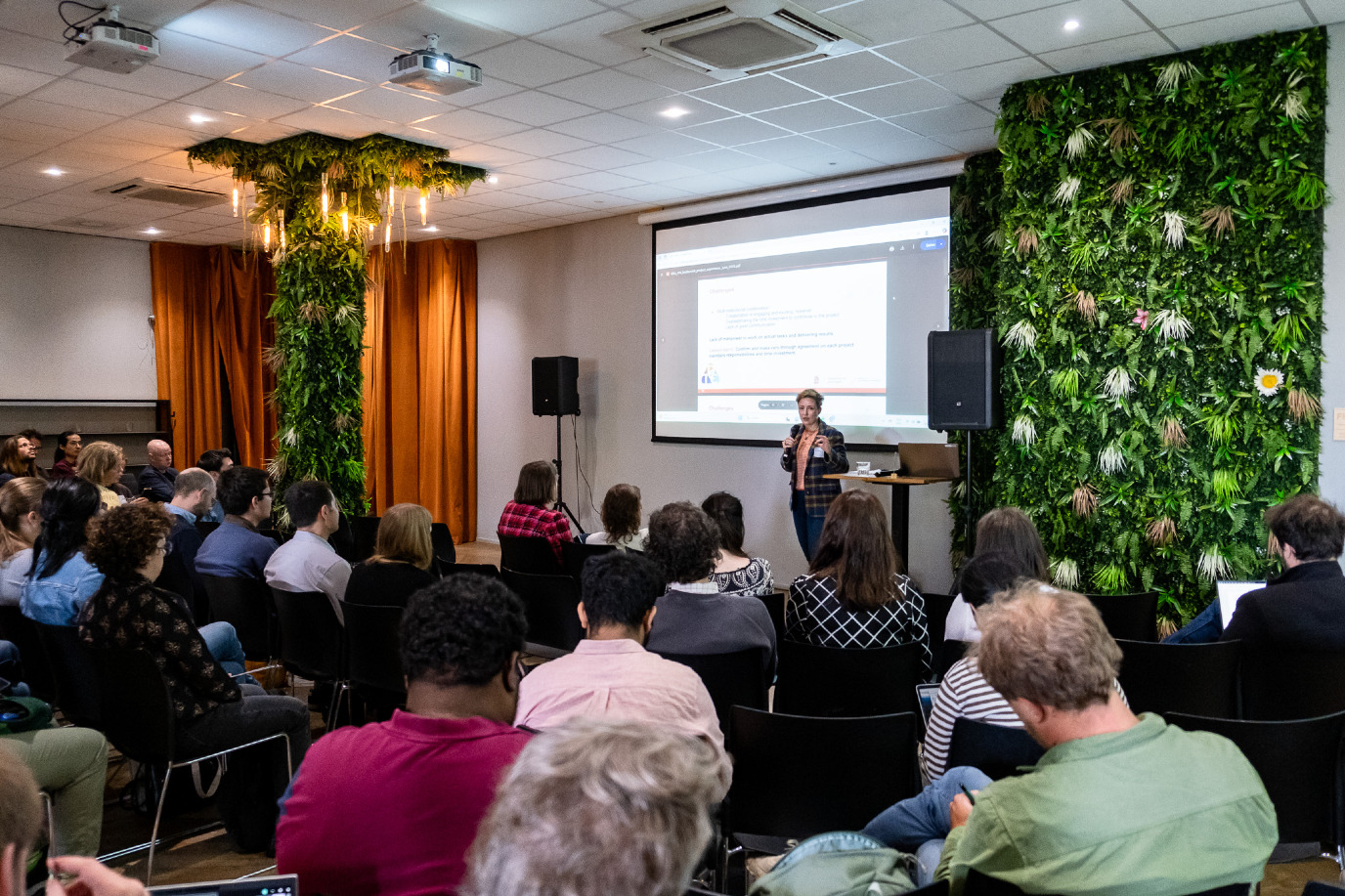
Target group and categories
The project primarily relied on collecting data from the actual researchers and research professionals. For this, a survey of 26 questions was distributed across the NES community for four months. The survey questions are grouped into five categories based on the context and intent:
-
Participant profiles & roles
-
Context & use of the research software
-
Project & funding awareness
-
Budget allocation & financial sustainability
-
Human resources & maintenance responsibilities
-
Recognition
Distribution challenges
Identifying and reaching the target group proved to be quite challenging, as many NES research fields are not directly recognizable as part of the NES domain. To distribute the survey effectively within the NES scientific community involved in research software development, we collaborated with DCCs across the Netherlands, the Open Science Communities, the Dutch Research Software Engineering community, and TDCC NES.
However, this task turned out to be more difficult than anticipated. We discovered that the NES community in the Netherlands is quite large and diverse. Reaching the relevant institutions, faculties, and departments was time-consuming and complicated by the difficulty of locating the right contact persons and channels for distributing the survey.
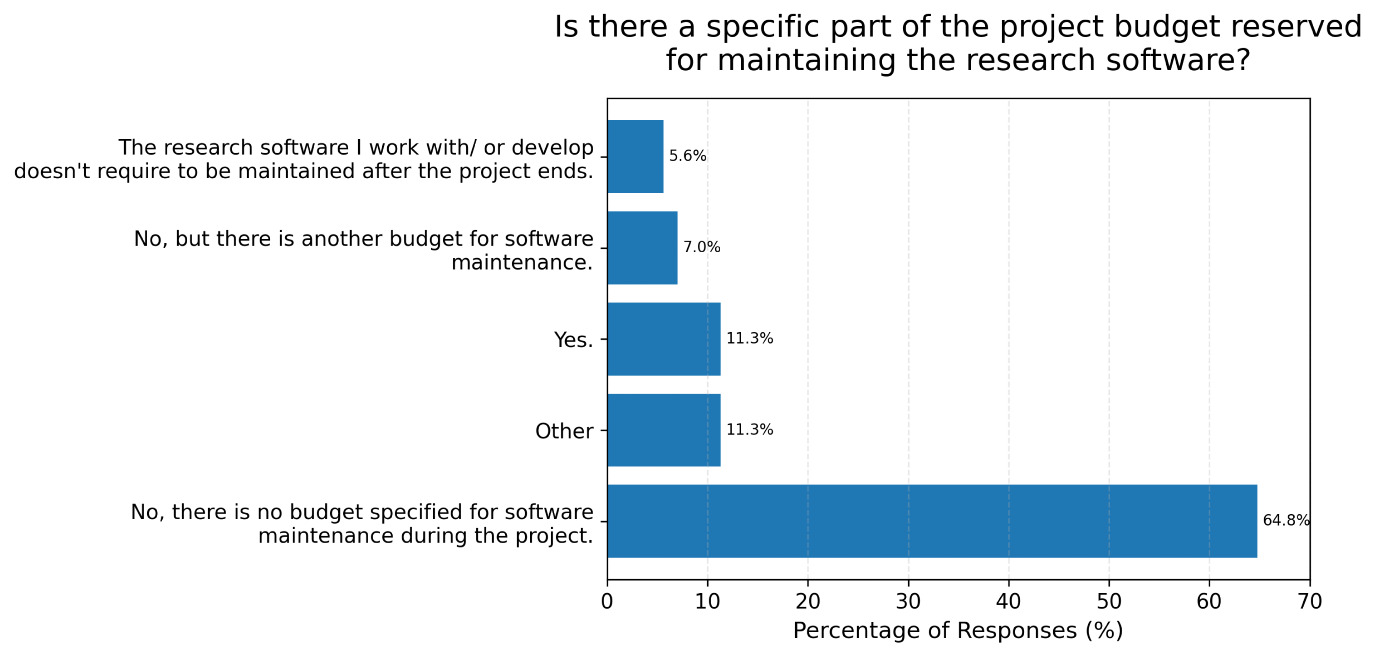
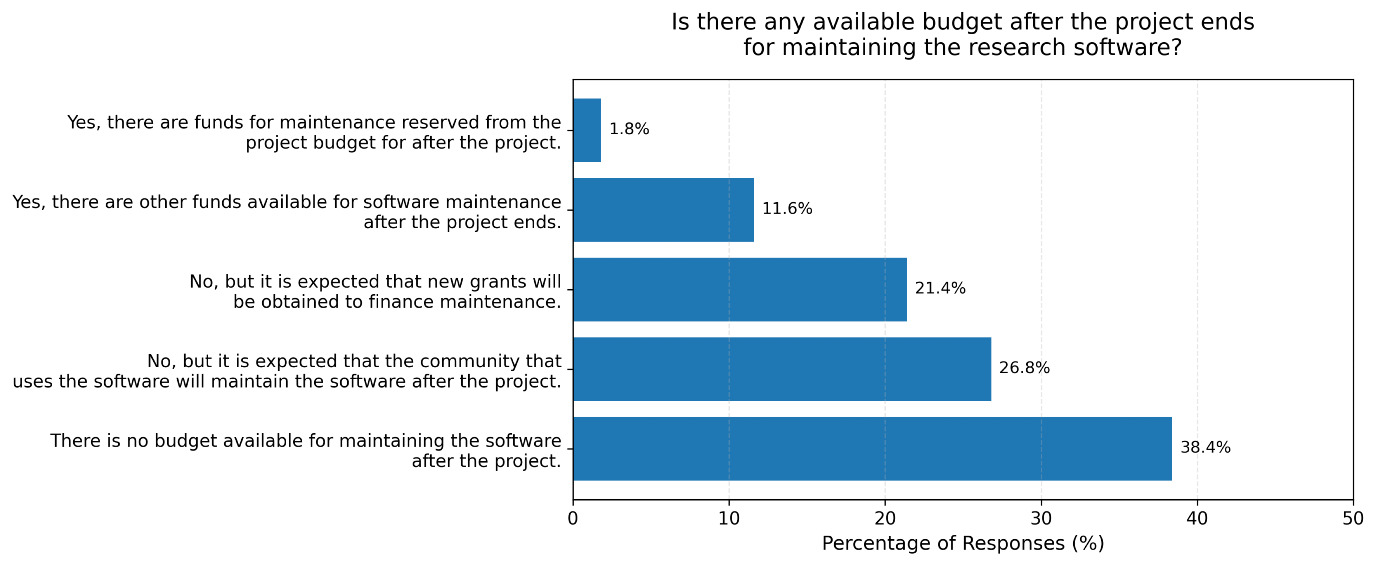
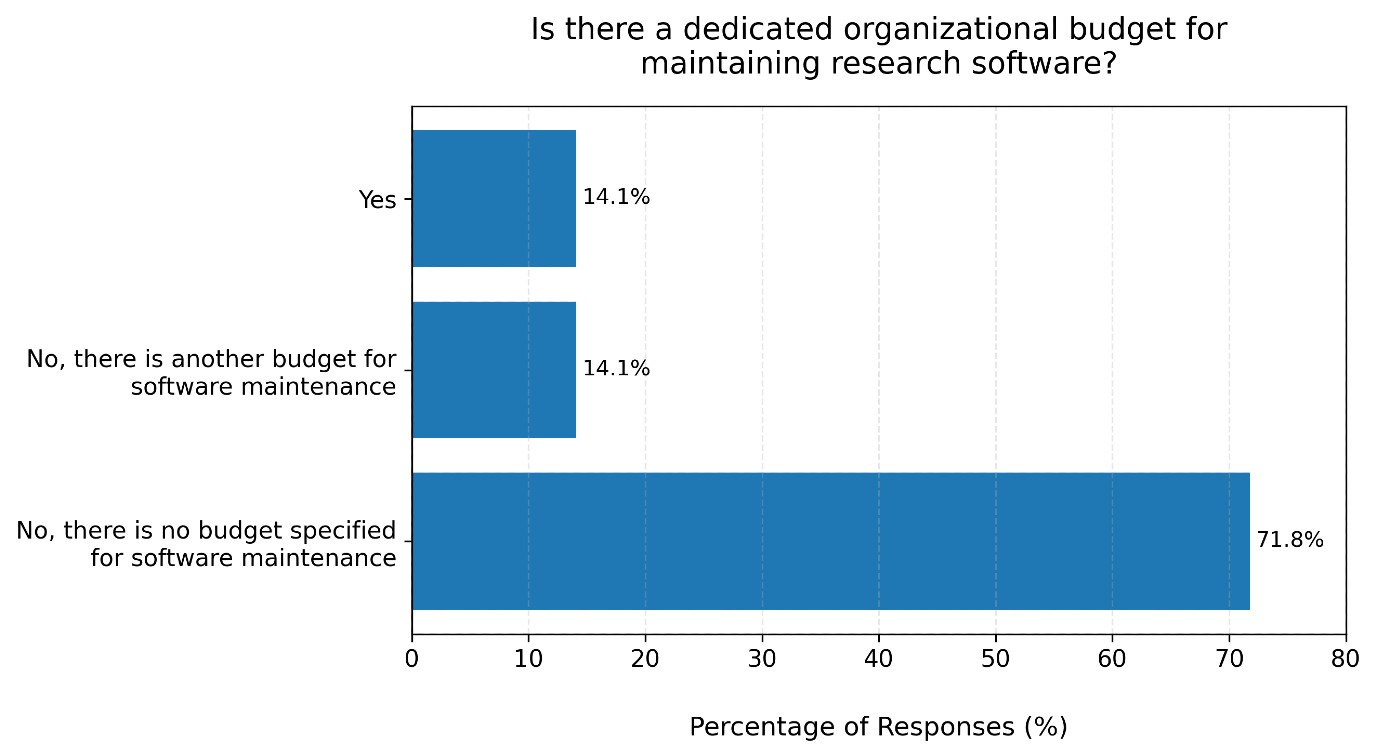
Summary of Key Findings
-
Most survey participants were affiliated with universities and represented a broad range of research fields within the NES domain. They frequently perform multiple roles—developing, using, maintaining, and managing research software. While development and use occupy the largest share of work time, maintenance consistently receives the least attention, both in effort and formal role definition. This highlights a systemic under-prioritization of maintenance, despite its essential role in software sustainability.
-
Research software is typically intended for use beyond the individual, whether by a research group or a broader scientific community. It includes everything from specific tools to core infrastructure. However, this collective orientation is not supported by long-term structural support or funding models.
-
Software development is often embedded within funded research projects, yet many respondents are unaware of how this funding is structured, and maintenance is frequently excluded. Funding is described as fragmented or ad hoc, with many contributors working without designated support or in their spare time. Dependence on NWO, EU, and eScience Center funding is evident, but transparency is lacking.
-
Formal budgeting for maintenance is rare. When funds are available, they tend to reallocate existing personnel rather than support dedicated staff. Maintenance responsibilities fall informally to available team members, especially PhD students or postdocs, with little contractual recognition.
-
The top challenges identified are funding, sustainability, and lack of recognition. Maintenance work is often invisible in reporting systems and undervalued in career advancement. Participants express concern over the lack of structural support and long-term vision for maintaining vital research software.
Recommendations for funders, policy makers and organizations
The results point to the organizational invisibility of the development and maintenance of research software. Although software maintenance is widespread and time-consuming, it remains structurally unsupported. Recognition and funding for these activities are inconsistent, often relying on individual initiative and ad hoc arrangements.
To bridge this gap, both research organizations and funders must integrate research software development and maintenance into career systems, budgeting processes, and infrastructure planning.
More news
-
15 September 2025
Successful visit to the UG by Rector of Institut Teknologi Bandung

